Tarot card readings have long captivated individuals seeking to unravel the mysteries of their future. The enigmatic nature of these readings, shrouded in symbolism and ancient traditions, has fascinated people for centuries. Many turn to tarot card readings in search of guidance and insight into their lives, hoping to unlock the secrets that lie ahead. In this comprehensive guide, we will delve into the world of tarot cards, exploring their history, the mechanics behind the readings, and the various spreads used to interpret the cards. Whether you’re a skeptic or a believer, this article will provide you with the knowledge and understanding needed to navigate the realm of tarot card readings.
Contents
- What are Tarot Card Readings?
- The History of Tarot Cards
- The Tarot Deck
- How do Tarot Card Readings Work?
- Choosing a Tarot Card Reader
- Preparing for a Tarot Card Reading
- Interpreting the Tarot Cards
- Common Tarot Card Spreads
- Tarot Card Reading Tips
- FAQs about Tarot Card Readings
- Benefits of Tarot Card Readings
- Conclusion
-
Frequently Asked Questions
- How long does a Tarot Card Reading session usually last?
- Can Tarot Card Readings provide guidance for relationships?
- Are Tarot Card Readings only for predicting the future?
- Can Tarot Card Readings be done remotely?
- Can Tarot Cards be used for personal reflection and meditation?
- Is it necessary to be familiar with Tarot Card symbolism to get a reading?
- Can Tarot Card Readings be a form of therapy?
- References
What are Tarot Card Readings?

Tarot card readings are a form of divination that use a deck of 78 cards to gain insights into various aspects of a person’s life. These readings are believed to tap into the subconscious mind and the energy surrounding the individual, offering guidance and understanding. The cards themselves are rich in symbolism, with each card representing a different archetype, situation, or emotion. The Tarot deck is divided into two main sections: the Major Arcana and the Minor Arcana. The Major Arcana consists of 22 cards that depict major life events and spiritual lessons, while the Minor Arcana, similar to a regular deck of playing cards, is divided into four suits: Wands, Cups, Swords, and Pentacles. Each suit represents a different area of life and is associated with specific characteristics and elements. The Tarot cards are shuffled and laid out in various spreads, such as the popular three-card spread or the elaborate Celtic Cross spread, each offering a unique perspective on the situation at hand. Tarot card readings can provide insight, clarity, and guidance in areas such as relationships, career, and personal growth. It is important to note that while tarot card readings can offer valuable insights, they should not be seen as definitive predictions or a substitute for personal responsibility and decision-making. Tarot card readings are just one tool among many available for those seeking answers and guidance on their life journey.
The History of Tarot Cards

The history of tarot cards is a fascinating journey that dates back to the 15th century. While the exact origins of tarot cards are debated, they are believed to have originated in Europe, specifically in Italy and France. Initially, tarot cards were used solely for playing games, much like a regular deck of playing cards. It wasn’t until the late 18th century that tarot cards began to be associated with divination and esoteric practices. The cards gained popularity among occultists, mystics, and spiritual seekers who saw them as a means of gaining insight into the past, present, and future. The symbolism depicted on the cards, with rich imagery and archetypal figures, lent themselves well to interpretations for divination purposes. Tarot cards have since evolved and become an essential tool for those seeking spiritual guidance and self-reflection. Today, there are countless variations of tarot decks available, each with its own unique artwork, themes, and interpretations. The rich history of tarot cards has influenced many other forms of divination, such as palmistry and astrology, as practitioners incorporate tarot imagery and symbolism into their readings to enhance the overall experience. Understanding the history of tarot cards helps us appreciate their significance and the role they play in unlocking the mysteries of our lives.
The Tarot Deck
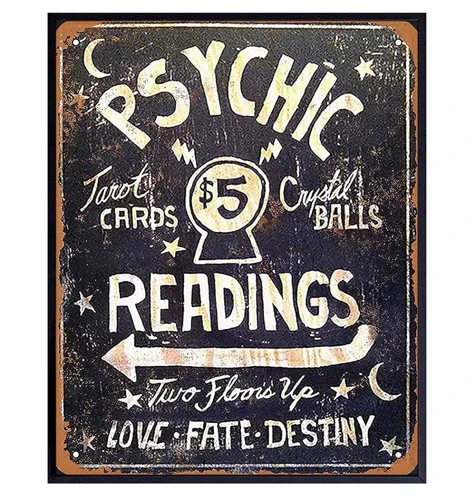
The Tarot deck is a powerful tool used in tarot card readings to gain insight and understanding. It consists of 78 cards, each with its own unique symbolism and meaning. The deck is divided into two main sections: the Major Arcana and the Minor Arcana. The Major Arcana consists of 22 cards, each representing a significant life event or spiritual lesson. These cards, such as The Fool, The Magician, and The High Priestess, hold deep wisdom and carry a profound impact on the reading. The Minor Arcana, on the other hand, resembles a regular deck of playing cards and is divided into four suits: Wands, Cups, Swords, and Pentacles. The suits represent different areas of life and are associated with specific characteristics and elements. In a tarot card reading, the chosen cards from the deck are laid out in various spreads to offer guidance and insight. Each card drawn offers a unique piece of the puzzle, allowing the reader to interpret the messages and meanings they hold. While the tarot deck can be used by anyone, mastering its interpretations and nuances takes time and practice. By studying the symbolism of the cards and understanding their contextual relationships, one can unlock the profound wisdom that the Tarot deck holds. Whether used for self-reflection or through the guidance of a gifted tarot card reader, the Tarot deck offers a fascinating glimpse into the realms of the past, present, and future.
Major Arcana
The Major Arcana is a significant component of the Tarot deck, consisting of 22 cards that hold deep symbolism and represent powerful archetypes. These cards are often associated with major life events and spiritual lessons. Each card in the Major Arcana carries its own unique meaning and story. To provide a glimpse into this mysterious realm, let’s explore some of the most renowned cards in the Major Arcana:
1. The Fool: Symbolizing new beginnings, innocence, and stepping into the unknown, The Fool represents a sense of adventure and spontaneity. This card encourages embracing opportunities without fear or hesitation.
2. The Magician: A card of manifestation and possessing the power to create one’s reality, The Magician combines the elements of the spiritual and the physical. It signifies the ability to harness one’s skills and resources to manifest desired outcomes.
3. The High Priestess: Representing intuition, mystery, and divine feminine energy, The High Priestess serves as a guide to hidden knowledge and subconscious awareness. This card encourages trust in one’s intuition and the exploration of deeper truths.
4. The Emperor: Symbolizing authority, structure, and leadership, The Emperor represents the manifestation of one’s ambitions and the ability to establish order and control. This card embodies the strength and stability needed to take charge of a situation.
5. The Death: Contrary to its ominous name, The Death card signifies transformation, rebirth, and the end of one chapter to make way for new beginnings. It represents the inevitability of change and the need to release the old to embrace the new.
6. The World: A card of completion and fulfillment, The World signifies reaching a state of wholeness and harmony in one’s journey. It represents a sense of accomplishment and the integration of all aspects of self.
The Major Arcana cards provide profound insights into the human experience, offering guidance and wisdom in various areas of life. Understanding their meanings and interpreting their messages can be a powerful tool in self-reflection, personal growth, and decision-making. Each card connects us to a deeper understanding of ourselves and the world around us. By exploring the Major Arcana, we open ourselves to the possibility of transformation and empowerment on our life’s journey.
Minor Arcana
The Minor Arcana is an integral part of the Tarot deck and consists of 56 cards divided into four suits: Wands, Cups, Swords, and Pentacles. Each suit represents a different aspect of life and is associated with specific elements and characteristics.
Wands: The Wands suit is often associated with the element of fire and represents creativity, inspiration, and passion. It signifies ambition, career, and personal growth. The cards in this suit can indicate new opportunities, growth, and the drive to pursue one’s goals.
Cups: The Cups suit is linked to the element of water and signifies emotions, relationships, and intuition. It represents matters of the heart, love, and deep emotional connections. The cards in this suit can indicate romantic relationships, friendships, and the exploration of one’s feelings and desires.
Swords: Associated with the element of air, the Swords suit represents intellect, communication, and challenges. It signifies the power of the mind, decision-making, and conflicts. The cards in this suit can indicate mental clarity, decision-making processes, and the need to face and overcome obstacles.
Pentacles: The Pentacles suit is linked to the element of earth and symbolizes practicality, finances, and material aspects of life. It represents wealth, stability, and abundance. The cards in this suit can indicate financial matters, career success, and the importance of grounding and practicality.
Each suit of the Minor Arcana also includes numbered cards from Ace to Ten, along with four Court Cards: Page, Knight, Queen, and King. These cards further enhance the interpretations and can represent different individuals, personalities, or energies in a reading.
Understanding the Minor Arcana is essential for interpreting the Tarot cards accurately. It allows the reader to gain deeper insights into various areas of life and provides a comprehensive understanding of the messages and guidance the cards have to offer.
To further explore the world of divination and gain insights into other techniques and practices, you may be interested in learning about /insight-psychic-astrology/ or delving into the fascinating realm of /art-of-tea-leaf-reading/.
How do Tarot Card Readings Work?
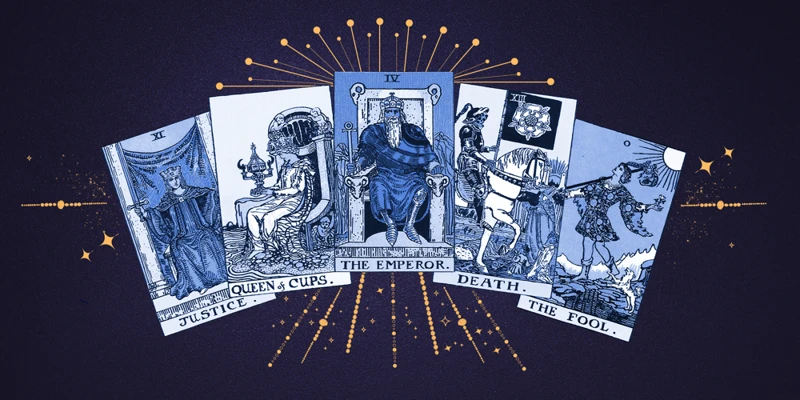
Tarot card readings work by tapping into the intuitive and psychic abilities of the reader, as well as the inherent symbolism of the cards themselves. The reader uses their knowledge of the cards, their meanings, and their relationship to one another to interpret the messages they convey. When a person seeks a tarot card reading, they typically have a specific question or area of their life they want guidance on. The reader will then shuffle the cards while focusing on the question or topic at hand. The individual seeking the reading will often be asked to select a certain number of cards from the deck or to cut the deck into specific piles. The chosen cards are then laid out in a particular spread, which determines the position and significance of each card. The reader will analyze the cards’ meanings, their positions in the spread, and the connections between them to provide insights and guidance to the individual. It’s important to note that a tarot card reading is not a definitive answer or fortune-telling session but rather a tool for self-reflection, introspection, and gaining a deeper understanding of one’s current situation. The interpretation of the cards is highly subjective and relies on the intuition, knowledge, and experience of the reader, combined with the individual’s own interpretation and reflection. In this way, tarot card readings offer a unique and personalized glimpse into one’s past, present, and potential future, providing guidance and clarity on the path forward. The use of tarot cards as a divination tool is just one of many methods available to those seeking insight and guidance, along with other practices such as astrology, palmistry, or tea leaf reading.
Choosing a Tarot Card Reader
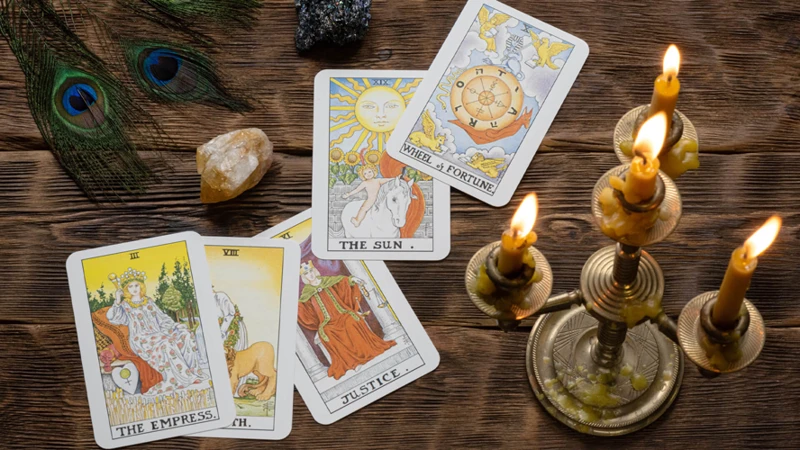
When it comes to choosing a tarot card reader, it’s essential to find someone who resonates with you and provides a comfortable and trustworthy experience. Here are some factors to consider:
1. Expertise and Experience: Look for a tarot card reader who has a deep understanding of the cards, symbolism, and interpretation. Experience in the field can indicate their level of proficiency and expertise.
2. Reviews and Recommendations: Read reviews and seek recommendations from friends or online communities who have had positive experiences with tarot readers. This can help you gauge the reader’s reliability and the quality of their readings.
3. Specialization: Some tarot readers may specialize in specific areas like love and relationships, career, or personal growth. Consider your specific needs and find a reader who aligns with your interests and concerns.
4. Connection: Establishing a connection with your tarot card reader is crucial. Pay attention to their energy, communication style, and whether you feel comfortable opening up to them. Trust your intuition in selecting a reader who feels right for you.
5. Reading Formats: Tarot card readings can be conducted in person, over the phone, or through online platforms. Decide which format you are most comfortable with and ensure that the reader offers that option.
6. Ethics and Boundaries: Ensure that the tarot card reader has a clear code of ethics and respects your privacy and confidentiality. A reputable reader will prioritize the well-being of their clients and maintain professional boundaries.
Remember, the choice of a tarot card reader is a personal one. Take your time, do thorough research, and trust your instincts to find a reader who can provide you with the guidance and insight you seek on your journey.
Preparing for a Tarot Card Reading
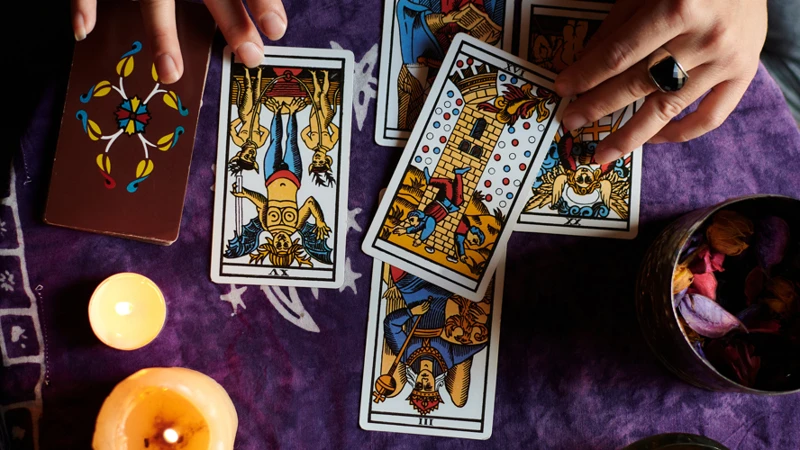
Preparing for a tarot card reading is essential to ensuring a meaningful and insightful experience. Before your session, it is important to set an intention, clearly defining what you hope to gain or what questions you seek answers to. This helps focus the energy and provides a framework for the reading. Additionally, take the time to formulate specific questions that you would like guidance on. This allows the tarot card reader to offer more targeted interpretations and insights. It is also recommended to approach the reading with an open mind and a willingness to receive the messages that come through. Clearing your mind of any preconceived notions or expectations allows for a deeper connection with the cards and the intuitive energy. Consider journaling about your thoughts and emotions before and after the reading to reflect on the insights gained. By taking these steps and preparing yourself mentally and emotionally, you can optimize your tarot card reading experience and gain valuable guidance for your life’s journey. For those interested in exploring other forms of divination, such as palmistry, you may find power palmistry intriguing as it offers another perspective on understanding the past, present, and future.
Setting an Intention
Setting an intention is an essential step in preparing for a tarot card reading. It involves clarifying and focusing your energy on a specific goal or area of your life that you seek guidance or insight into. Before the reading begins, take a moment to center yourself and reflect on what you hope to gain from the experience. This can be done through quiet meditation or simply by visualizing your intention in your mind. By setting a clear intention, you are directing the energy of the reading towards a specific purpose, allowing the cards to provide more targeted guidance and answers. Your intention could be related to a specific question or issue you are facing or a general desire for guidance and clarity in your life. It is important to state your intention in a positive and empowering way, focusing on what you want to achieve rather than what you want to avoid. For example, instead of saying “I don’t want to be alone,” you can phrase your intention as “I am seeking a loving and fulfilling relationship.” This positive framing helps to attract positive energy and align your subconscious mind with your desired outcome. Setting an intention before a tarot card reading helps create a sense of purpose and allows for a more meaningful and insightful experience.
Formulating Questions
Formulating questions is a crucial step in preparing for a tarot card reading, as it helps you focus your intentions and gain clarity on the specific areas of your life that you want guidance on. When formulating questions for a tarot card reading, it’s important to be specific and open-ended. Avoid asking yes or no questions, as tarot card readings are meant to offer deeper insights and guidance. Instead, ask questions that begin with “what,” “how,” or “why,” as these types of questions encourage exploration and reflection. For example, instead of asking, “Will I get a promotion at work?”, you can ask, “What can I do to enhance my career growth and opportunities?” This allows the tarot reader to provide you with a more detailed and insightful response. It’s also helpful to prioritize your questions and focus on the areas of your life that you feel are most important or in need of guidance. Keep in mind that tarot card readings are not fortune-telling sessions, but rather tools for self-reflection and gaining guidance. By formulating thoughtful questions, you can enhance your tarot card reading experience and receive the most valuable insights to help you navigate your path with clarity and empowerment.
Interpreting the Tarot Cards
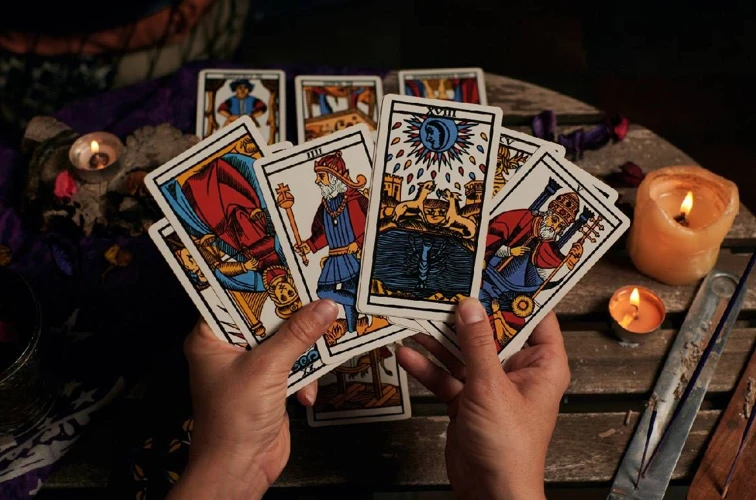
Interpreting the Tarot cards is a skill that requires both intuition and knowledge of the symbolism within the deck. Each Tarot card possesses multiple layers of meaning, and it is the reader’s task to weave these meanings together to form a coherent message. The interpretation process begins by examining the individual cards within the context of the chosen spread. The reader considers the symbolism, numerology, and elemental associations of each card, as well as their position in the spread and their relationships to one another. Reading the Tarot cards involves looking beyond the literal depiction on the card and tapping into the collective unconscious, allowing the intuition to guide the interpretation. Additionally, the reader may incorporate their own knowledge, experience, and psychic abilities, if applicable. It is essential to approach Tarot card interpretation with an open mind and a willingness to explore different possibilities. The messages conveyed by the Tarot cards may be literal, metaphorical, or archetypal, and the reader must carefully analyze the cards’ meanings in relation to the querent’s specific question or situation. Through the art of interpretation, the Tarot cards become a powerful tool for self-reflection, insight, and guidance. Remember, the interpretation of Tarot cards is subjective, and it is important to trust your own instincts and intuition when deriving meaning from the cards.
Common Tarot Card Spreads
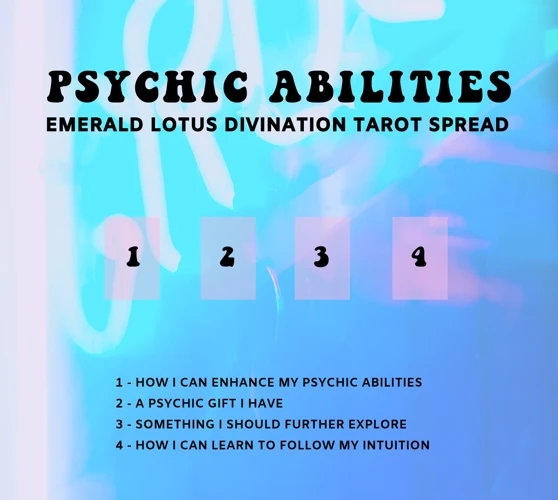
Common Tarot Card Spreads are specific arrangements of cards used to gain deeper insights and explore different aspects of a situation. One popular spread is the Three-Card Spread, which offers a simple yet powerful glimpse into the past, present, and future. In this spread, the first card represents the past, shedding light on the influences and experiences that have led to the current situation. The second card signifies the present, providing insight into the current circumstances and the energies at play. The third card signifies the future, offering guidance and potential outcomes based on the current trajectory. Another widely used spread is the Celtic Cross Spread, a more comprehensive layout with ten cards that provides a detailed analysis of a situation or question. Each position in the spread represents different aspects of the individual’s life, such as hopes and fears, external influences, and potential outcomes. This spread allows for a more in-depth exploration of the situation and offers a holistic understanding of the factors at play. A Relationship Spread is often utilized for matters of the heart, providing insight into the dynamics, challenges, and potential growth within a romantic relationship. Each position in the spread corresponds to different facets of the relationship, such as communication, shared values, and future possibilities. These spreads, among many others, serve as valuable tools for tarot card readers to interpret the cards and provide meaningful guidance and understanding to their clients.
Three-Card Spread
The Three-Card Spread is one of the most versatile and commonly used spreads in tarot card readings. It offers a simple yet insightful look into past, present, and future aspects of a situation or question. To perform this spread, the tarot cards are shuffled and three cards are drawn and laid out in a row. Here is a breakdown of what each position represents:
1. Card One: The Past – This card represents the circumstances or events that have led up to the present situation. It provides insights into any influences or experiences that may have shaped the current state of affairs.
2. Card Two: The Present – This card offers a snapshot of the present moment and sheds light on the current energies and dynamics at play. It can reveal both the strengths and challenges that are influencing the situation.
3. Card Three: The Future – This final card provides a glimpse into what may lie ahead based on the current trajectory. It can indicate potential outcomes, opportunities, or obstacles that may arise in the future.
When interpreting the Three-Card Spread, it’s important to consider the interplay between the cards. Look for any connections or patterns that may emerge, as well as any contrasting energies. Pay attention to the symbolism and imagery on each card, as they can provide additional layers of meaning. Remember that the cards offer guidance and insights, but the final outcome is ultimately influenced by personal choices and actions.
The Three-Card Spread is an excellent choice for gaining quick insights into a specific situation, making it a popular choice for beginners and experienced readers alike. Its simplicity allows for easy interpretation, making it a versatile tool for exploring various aspects of life and decision-making.
Celtic Cross Spread
The Celtic Cross Spread is one of the most widely used and versatile tarot card spreads. It consists of ten cards arranged in a specific pattern that provides detailed insights into the querent’s question or situation. Each position in the spread represents different aspects of the person’s life or the influences at play. Let’s explore the meanings of each position in the Celtic Cross Spread:
1. Present: This card represents the current situation or state of the querent.
2. Challenge: This card reveals the primary obstacle or issue the person is facing.
3. Subconscious: This card provides insight into the person’s underlying emotions, desires, or motivations.
4. Conscious: This card reflects the individual’s conscious thoughts and beliefs.
5. Past Influences: This card sheds light on past events or experiences that are influencing the current situation.
6. Future Influences: This card offers a glimpse into potential future events or developments.
7. Querent’s Attitude: This card reflects the person’s attitudes, beliefs, or approach to the situation.
8. External Influences: This card represents external factors or people impacting the individual’s situation.
9. Hopes and Fears: This card uncovers the person’s hopes, dreams, or concerns related to the question.
10. Outcome: This final card indicates the potential outcome or resolution of the situation.
By examining the cards in each position and considering their individual meanings, a tarot card reader can provide a comprehensive interpretation of the querent’s question and offer guidance or advice. The Celtic Cross Spread provides a holistic view of the situation and offers deeper insights into the various factors at play. It is important to note that interpretations may vary based on the reader’s intuition and the specific context of the reading.
Relationship Spread
The Relationship Spread is a popular tarot card spread used specifically to gain insights into relationships and matters of the heart. This spread aims to provide guidance on the dynamics, challenges, and potential outcomes of a romantic partnership or a significant relationship. The spread typically consists of five to seven cards laid out in a specific pattern, each card representing a different aspect of the relationship.
Card 1: The Significator: This card represents you or the person seeking the reading. It offers insight into your current state of mind, emotions, or the energy you are bringing into the relationship.
Card 2: The Other Person: This card represents the other person involved in the relationship. It sheds light on their thoughts, feelings, or the energy they are bringing into the relationship.
Card 3: Shared Energies: This card represents the energies that are shared between you and the other person. It shows the strengths or challenges present in the relationship dynamic.
Card 4: Obstacles: This card reveals the obstacles or challenges that may be present in the relationship. It could indicate areas of conflict, differences, or areas that require attention and communication.
Card 5: Advice: This card offers guidance and advice on how to navigate the relationship. It provides insights into what actions or mindset may be beneficial for the growth and harmony of the relationship.
In some variations of the Relationship Spread, additional cards may be included to explore specific aspects of the relationship, such as communication, trust, or long-term potential. Once the cards are laid out, the tarot card reader interprets the meanings and connections between the cards to provide a comprehensive understanding of the relationship and its potential path.
It’s important to remember that the Relationship Spread is not a definitive predictor of the future, but rather a tool for reflection and guidance. It can help individuals gain clarity, insights, and different perspectives on their relationships, ultimately empowering them to make informed decisions and choices.
Tarot Card Reading Tips
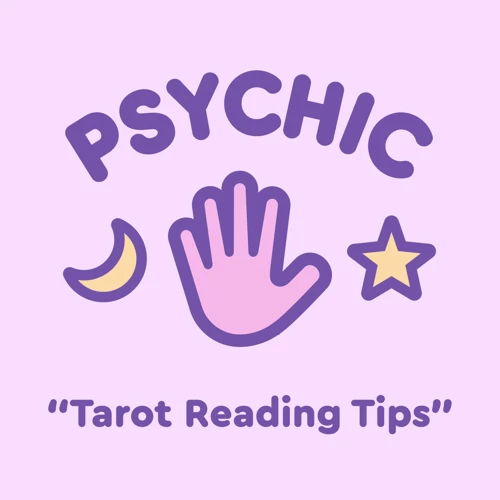
When it comes to tarot card readings, there are a few tips that can enhance your experience and help you get the most out of the session. Firstly, it is important to trust your intuition and connect with the cards on a personal level. Allow your instincts to guide you as you interpret the meanings and messages conveyed by the cards. Another tip is to keep an open mind and be receptive to the insights that come through. It’s important to let go of any preconceived notions or biases and approach the reading with curiosity and a willingness to explore new possibilities. Taking notes during the reading can also be helpful, as it allows you to reflect on the messages later and track any patterns or recurring themes. Lastly, it’s important to choose a knowledgeable and skilled tarot card reader who resonates with you. Doing some research and reading reviews can help you find a reader who aligns with your needs and preferences. By following these tips, you can enhance your tarot card reading experience and gain valuable insights into your life’s journey.
Trust Your Intuition
Trusting your intuition is a crucial aspect of tarot card readings. While the cards themselves hold symbolism and meaning, it is ultimately your intuition and inner wisdom that will guide you in interpreting their messages. Here are some key points to keep in mind when it comes to trusting your intuition during a tarot card reading:
1. Listen to your gut feeling: Pay attention to the immediate response you have when flipping a card or when a particular card catches your eye. Trust your initial reaction and the feelings that arise within you.
2. Notice subtle cues: Sometimes, your intuition communicates with you through subtle cues or sensations. It could be a tingling sensation in your body, a sudden shift in mood, or a hunch that something is significant. Acknowledge and honor these cues as they may hold valuable insights.
3. Embrace silence and stillness: Take moments of silence during your tarot card reading to tune into your intuition. Quiet your mind and allow your inner voice to be heard. This is where your intuition can speak the loudest.
4. Reflect on personal experiences: Draw from your own life experiences and personal knowledge when interpreting the cards. Your intuition is deeply connected to your own unique perspective and wisdom, and it can help you make meaningful connections between the cards and your life.
5. Trust the process: Remember that the tarot is a tool for self-reflection and exploration. Trust that the cards will reveal the insights and guidance you need at that moment. Even if the meaning is not immediately clear, trust that it will become evident in due time.
Trusting your intuition during a tarot card reading allows for a deeper connection with the cards and a more personal interpretation of their messages. Embrace your intuitive abilities and allow them to enhance your tarot card reading experience. Trust yourself, trust the process, and trust in the guidance that unfolds before you.
Keep an Open Mind
Keeping an open mind is crucial when participating in a tarot card reading. Open-mindedness allows you to fully embrace the experience and explore the insights and messages that the cards may reveal. Here are some key points to keep in mind:
1. Release Preconceived Notions: Approach the reading without any preconceived ideas or expectations. The cards may offer insights that challenge your existing beliefs or assumptions. Stay open to new possibilities and perspectives.
2. Embrace Symbolism: Tarot cards are rich in symbolism, and their meanings can vary depending on the reader’s interpretation and the context of the reading. Instead of rigidly sticking to a specific interpretation, be open to the symbolism and allow it to speak to you in its own unique way.
3. Trust the Reader: Tarot card readers are skilled individuals who have spent years studying and honing their craft. Trust in their expertise and allow them to guide you through the reading. Remember, the reader is there to facilitate the interpretation of the cards and provide insights, but ultimately, you are in control of your own decisions.
4. Listen to Intuition: While it’s essential to trust the reader, it’s equally important to listen to your own intuition. Pay attention to the thoughts, feelings, and sensations that arise during the reading. Your intuition may offer additional insights or validation for the messages conveyed by the cards.
5. Stay Receptive: Approach the reading with an open heart and mind. Allow yourself to be vulnerable and receptive to the messages and guidance that the cards reveal. Avoid dismissing or rejecting information that may initially seem unfamiliar or uncomfortable. Sometimes, the most profound breakthroughs occur when we step outside our comfort zones.
Remember, a tarot card reading is a collaborative process between you, the reader, and the cards themselves. By keeping an open mind, you create space for meaningful and transformative experiences that can help you gain clarity and insight into various aspects of your life.
Take Notes
- Document Your Reading: Taking notes during a tarot card reading can be incredibly beneficial. As the reader unpacks the meanings and interpretations of the cards, it’s easy to become overwhelmed or forget key details. Having a pen and notebook handy allows you to jot down important insights, messages, or themes that arise during the reading.
- Track Patterns and Progressions: By keeping track of your tarot card readings over time, you can start to identify patterns and progressions in the cards that are drawn. This can provide a deeper understanding of recurring themes or situations in your life. It can also shed light on how circumstances may be evolving or changing over time.
- Reflect on Your Initial Reactions: Taking notes immediately after a reading allows you to capture your initial thoughts, emotions, and reactions. This can be particularly useful when revisiting your notes later on. By reflecting on your initial responses, you may gain further clarity or insight into the messages and guidance provided by the cards.
- Record Personal Observations: Alongside the reader’s interpretations, it can be helpful to make note of any personal observations or connections you make during the reading. This could be a sudden realization, a gut feeling, or a personal association with a particular card or symbol. These personal insights can add depth and meaning to the overall reading.
- Refer Back to Your Notes: Keeping a record of your tarot card readings allows you to refer back to previous sessions and see how the guidance and messages have unfolded or impacted your life. This can provide a sense of perspective and remind you of the progress you’ve made or the challenges you’re currently facing.
Taking notes during a tarot card reading not only helps you remember the details, but it also encourages active engagement with the reading and promotes self-reflection. It is a valuable practice that can enhance your understanding and integration of the messages and guidance received from the tarot cards.
FAQs about Tarot Card Readings
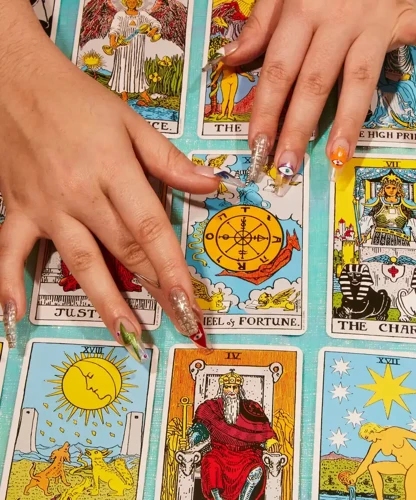
Are Tarot Card Readings Accurate? This is a common question that arises when discussing tarot card readings. While the accuracy of tarot card readings can vary, it’s important to remember that they are not meant to provide concrete predictions or a guarantee of specific outcomes. Tarot cards are more like a tool for self-reflection and gaining insight into a situation. The cards tap into the energy of the individual and the universe, offering guidance and a different perspective. The accuracy of a reading ultimately depends on the skill and intuition of the tarot card reader, as well as the connection between the reader and the individual seeking the reading. It’s also worth noting that tarot card readings should be approached with an open mind, as the interpretation of the cards can be subjective and can vary depending on the reader. While tarot card readings can be a valuable tool for personal growth and self-reflection, it’s essential to take the information with a grain of salt and use your own judgment in making decisions and choices.
Are Tarot Card Readings Accurate?
Are Tarot Card Readings Accurate?
– Tarot card readings are a tool for self-reflection and gaining insight into different areas of life. The accuracy of tarot card readings can vary depending on several factors.
– It’s important to approach tarot card readings with an open mind and realistic expectations. Tarot cards offer guidance and possibilities rather than concrete predictions.
– The accuracy of a tarot card reading can be influenced by the skill and intuition of the reader. An experienced and intuitive reader is more likely to provide meaningful interpretations.
– The accuracy of a tarot card reading also depends on the energy and intention of the individual seeking the reading. Being open, focused, and receptive can enhance the accuracy of the reading.
– Keep in mind that tarot card readings are subjective interpretations of symbols and archetypes. The cards act as a mirror and reflect the energy and emotions present at the time of the reading.
– Tarot cards can tap into the subconscious mind and offer insights that may not be immediately apparent. The accuracy of the reading may become evident over time as events unfold.
– It’s crucial to remember that tarot card readings are not set in stone. The future is not predetermined, and the decisions and actions we take can influence the outcome of a situation.
– Ultimately, the accuracy of a tarot card reading is a personal and individual experience. Some individuals may find the readings to be highly accurate and insightful, while others may find them less so.
– Regardless of the accuracy, tarot card readings can be a valuable tool for introspection, self-discovery, and gaining a fresh perspective on life’s challenges and opportunities.
Can Tarot Cards Predict the Future?
The topic of whether tarot cards can predict the future has been a subject of debate among believers and skeptics alike. While some people firmly believe that tarot cards have the power to foresee future events, it’s important to approach this question with a balanced perspective. Tarot cards are not magical objects that possess inherent psychic abilities to predict the future. Instead, they serve as a tool for tapping into the subconscious mind and the energy surrounding a person. The interpretation of the cards is based on the reader’s intuition and the symbolism within each card. Tarot card readings offer insights into the present moment and can provide guidance on potential outcomes based on the current path and energy patterns. However, it’s crucial to remember that the future is not set in stone. Our actions, decisions, and external factors can influence the course of events. Tarot card readings are meant to empower individuals by offering a deeper understanding of their current circumstances and potential outcomes. They serve as a mirror that reflects the energy and possibilities present in the present moment. Ultimately, the future is shaped by our choices and actions, and tarot card readings can provide guidance to support us in making informed decisions. It’s important to approach tarot card readings with an open mind and a willingness to take personal responsibility for shaping our own future.
Do I Need to Have Psychic Abilities to Read Tarot Cards?
Do I need to have psychic abilities to read tarot cards? This is a common question among those interested in delving into the world of tarot. The answer is no, you do not need to possess innate psychic abilities to read tarot cards. While some tarot readers may have heightened intuition or psychic gifts, it is not a prerequisite for learning and practicing tarot card reading. Tarot cards are a tool that can be used by anyone to tap into their own intuition and gain insight into a situation. The cards themselves hold deep symbolism and meaning, and by studying and understanding their interpretations, anyone can learn to read them. Developing a connection with the cards takes practice and patience. It involves studying the meanings of each card, familiarizing oneself with different spreads, and learning to trust one’s own intuition when interpreting the cards. Tarot readings are a combination of the cards’ symbolism, the reader’s interpretation, and the energy of the person seeking the reading. It is the reader’s ability to tap into their intuitive senses and connect with the energy of the cards that makes a tarot reading insightful. So, no, you don’t need to be psychic to read tarot cards, but an open mind, dedication to learning, and a willingness to trust your intuition are key elements in becoming a skilled tarot reader.
Benefits of Tarot Card Readings
Tarot card readings offer a range of benefits for individuals seeking guidance and self-reflection. Here are some key advantages of tarot card readings:
1. Self-Reflection and Personal Growth: Tarot card readings provide a platform for deep introspection and self-analysis. By exploring the symbols and messages within the cards, individuals can gain a better understanding of their own thoughts, emotions, and motivations. This self-reflection can lead to personal growth and a heightened sense of self-awareness.
2. Clarity and Insight: Tarot card readings have a way of shedding light on complex situations and providing clarity. They can help individuals see their challenges, options, and potential outcomes from a fresh perspective. The insights gained from a tarot reading can empower individuals to make more informed decisions and take action with confidence.
3. Validation and Confirmation: Tarot card readings can validate and confirm one’s intuition or gut feelings about a particular situation. Sometimes, we doubt our own instincts, but tarot cards can serve as a tool to reaffirm our inner knowing. This validation can bring a sense of reassurance and confidence in our choices.
4. Emotional Healing: Tarot card readings can serve as a therapeutic tool for emotional healing. The process of exploring the cards and their meanings can help individuals process and release difficult emotions, gain closure, and find inner peace. It can be a cathartic experience that supports emotional well-being.
5. Inspiration and Motivation: Tarot card readings have the ability to inspire and motivate individuals. The messages and symbols within the cards can provide encouragement, guidance, and inspiration to overcome challenges, pursue goals, and embrace positive change. They can ignite a sense of purpose and motivation to move forward in life.
6. Spiritual Connection: For those who are spiritually inclined, tarot card readings can deepen their connection to something greater than themselves. The archetypal images, esoteric symbols, and spiritual themes in the cards can tap into a person’s spiritual beliefs and provide a sense of guidance and connection to the divine.
It is important to remember that the benefits of tarot card readings may vary for each individual. The experience is highly personal and subjective. Tarot cards should be approached with an open mind and used as a tool for self-reflection and personal growth rather than a definitive source of predictions.
Conclusion
In conclusion, tarot card readings offer a fascinating glimpse into the world of divination and self-reflection. With a rich history dating back centuries, tarot cards have captivated individuals seeking guidance and understanding of their future. The deck itself, comprised of the Major Arcana and Minor Arcana, holds intricate symbolism and archetypal representations that can provide insight into various aspects of life. Through the process of shuffling and laying out the cards in different spreads, a skilled tarot card reader can interpret the symbols and provide guidance on relationships, career, and personal growth. However, it’s important to approach tarot card readings with an open mind, understanding that they are not definitive predictions but rather a tool for self-reflection and exploration. Trusting your intuition and keeping an open mind can enhance the experience and allow for a deeper understanding of the messages conveyed by the cards. Whether you seek clarity, confirmation, or inspiration, tarot card readings can offer valuable insights and help you unlock the potential that lies within. So, embrace the mysteries of the tarot and embark on a journey of self-discovery and enlightenment.
Frequently Asked Questions
How long does a Tarot Card Reading session usually last?
The duration of a tarot card reading session can vary depending on the reader and the type of reading being conducted. Sessions may last anywhere from 30 minutes to an hour or longer, depending on the depth of the reading and the number of questions being addressed.
Can Tarot Card Readings provide guidance for relationships?
Yes, tarot card readings can offer guidance and insights into relationships. Whether you have questions about an existing relationship, seeking guidance about potential partners, or looking for clarity on resolving conflicts, a tarot card reading can provide valuable perspectives and suggestions.
Are Tarot Card Readings only for predicting the future?
No, tarot card readings are not limited to predicting the future. They can also provide insights into current situations, offer guidance for decision-making, shed light on patterns and obstacles, and encourage personal growth and self-reflection.
Can Tarot Card Readings be done remotely?
Yes, tarot card readings can be done remotely. With the advancement of technology, many tarot card readers offer readings through video calls, email, or chat platforms. Remote readings can be just as accurate and insightful as in-person sessions.
Can Tarot Cards be used for personal reflection and meditation?
Absolutely! Tarot cards can be a valuable tool for personal reflection and meditation. Drawing a card each day and contemplating its message can provide a focal point for introspection, meditation, and setting intentions.
Is it necessary to be familiar with Tarot Card symbolism to get a reading?
No, it is not necessary to have a deep understanding of tarot card symbolism to receive a reading. A skilled tarot card reader will explain the cards and their meanings as they go along, making the reading accessible to individuals who are new to tarot.
Can Tarot Card Readings be a form of therapy?
Tarot card readings can offer therapeutic benefits such as self-reflection, gaining insights, and exploring different perspectives. However, it is important to note that tarot card readings should not be considered a substitute for professional therapy. If you are seeking therapeutic support, it is recommended to consult a qualified therapist or counselor.







